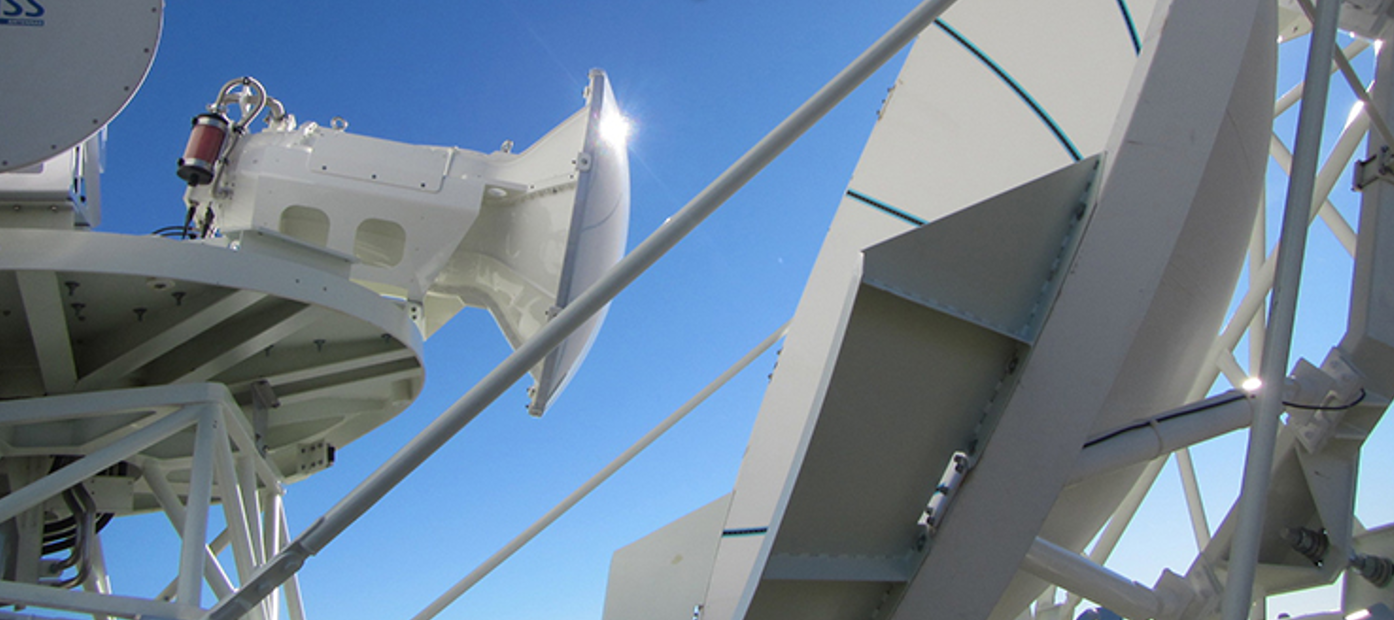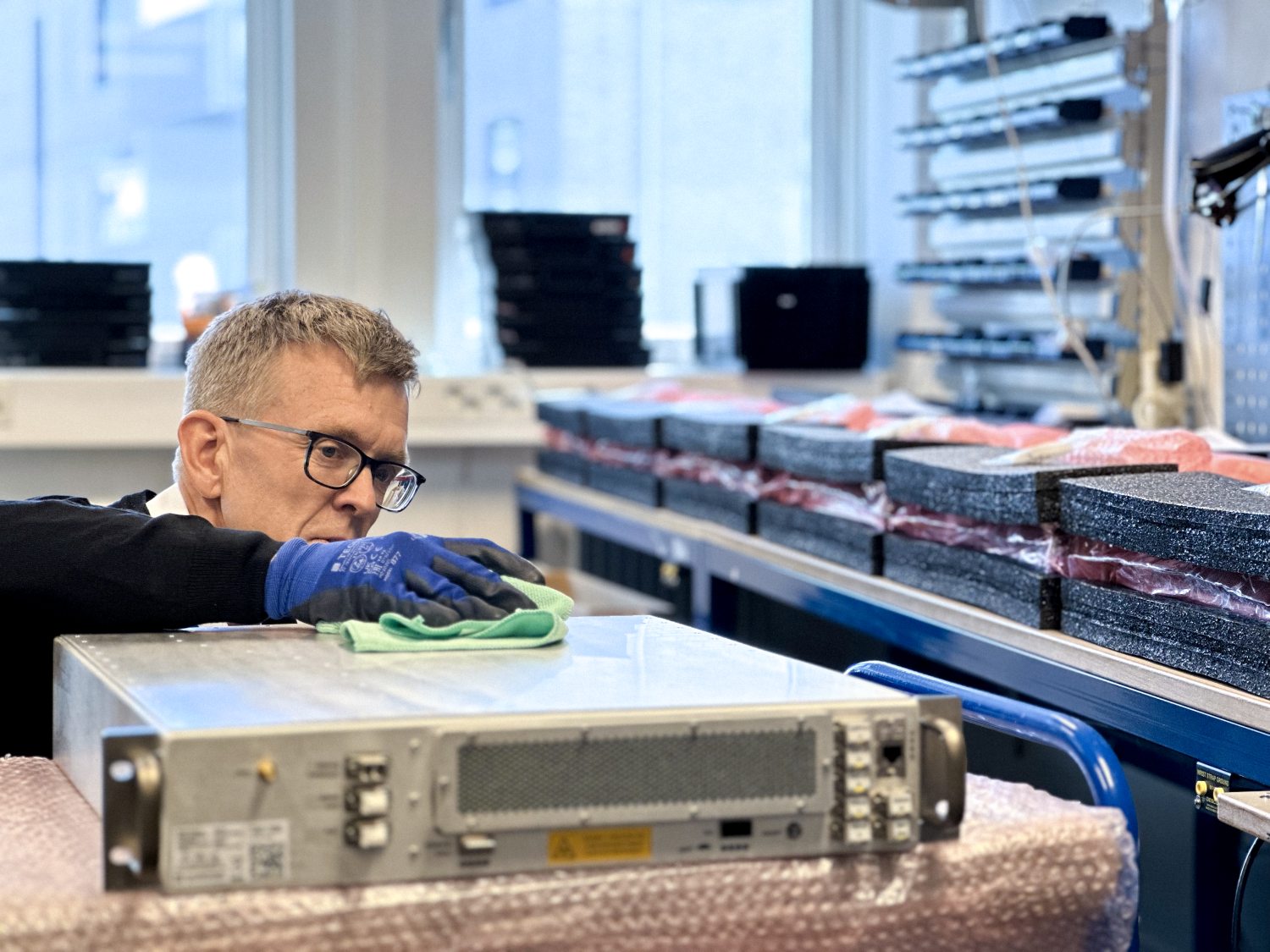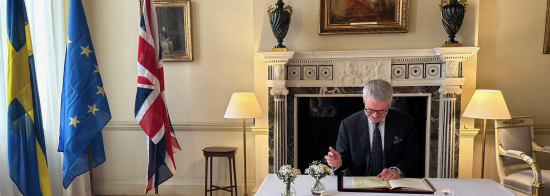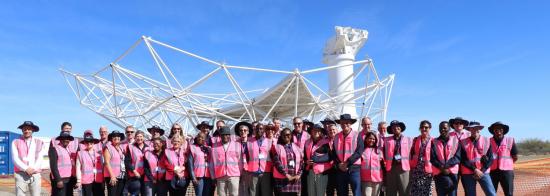Sweden

At a glance
- Two major SKAO contracts awarded so far with a total value of around €26m (300 MSEK)
- The SKA project already engages a community of over 60 scientists (based on attendance at national Swedish SKA Days in 2023 and 2024). Swedish scientists are represented on 13 of the SKAO’s 14 science working groups, one as co-chair.
- Chalmers University of Technology has been the coordinating body for Sweden from the SKAO’s establishment in 2021.
- Sweden hosts a station in the pathfinder LOFAR and is a member of the LOFAR ERIC
National involvement
Chalmers University of Technology is the host for Onsala Space Observatory, Sweden’s national research infrastructure for radio astronomy, which has been involved in the SKA project since its inception. The Swedish radio astronomy community is most strongly represented at Chalmers, but there are scientists with strong interest in the SKAO at in particular Stockholm University, Uppsala University and Lund University.
The Swedish science community actively took part in activities defining and developing the SKA project from its inception in the 1990s. In October 2021, an agreement was signed between the SKAO and Chalmers University of Technology, defining it as the organisation coordinating Swedish inputs to the SKA project.
During the SKA’s design phase, Sweden led activities developing wideband single-pixel feeds, one of the project’s Advanced Instrumentation programs. This led to development and testing of innovations in receiver technology (ambient temperature low noise amplifiers, developed by Swedish company Low Noise Factory, and dielectric loads for quadridge feeds).
Industrial participation
In 2024, contracts worth €26m (300 MSEK) were awarded to Swedish companies Qamcom and AAC Omnisys, both based in Gothenburg. Qamcom will deliver subsystems including 196 digital converter units for three frequency bands for the SKA-Mid telescope. AAC Omnisys will deliver 133 Band 1 receivers for the SKA-Mid telescope, the project’s largest single receiver. In addition, Swedish company Low Noise Factory will deliver two low noise amplifiers for each Band 1 receiver.
The Research Institutes of Sweden (RISE) was accredited by the SKAO to provide electromagnetic interference test facilities to support the protection of SKA equipment, at its laboratories in Borås, Sweden.

Science interests
Swedish radio astronomers have long been interested in VLBI, high-frequency radio astronomy, cosmic magnetism, evolved stars, molecular line and extragalactic neutral hydrogen astronomy, and the epoch of reionisation. As a reflection of this breadth, Swedish scientists are represented on 13 of the SKAO’s 14 science working groups (SWG). One is currently co-chair (the group VLBI), and Swedish scientists have previously chaired two other SWGs (Epoch of reionisation and Extragalactic spectral lines). Sweden is home to a lively radio astronomy community. The second national SKA Science Days were held in September 2024 in Gothenburg, attracting 65 participants. A third is planned for February 2026 in Stockholm.
A wide range of SKA science topics are of special interest for astronomers in Sweden, in particular the epoch of reionisation (in particular at Stockholm University), fast radio bursts (Chalmers, Stockholm), transients, supernovae and gravitational wave sources (Stockholm, Chalmers), star and planet formation (Chalmers, Lund, Stockholm), evolved stars (Chalmers, Uppsala), and extragalactic neutral hydrogen (Chalmers). Swedish scientists are also represented in research on technosignatures, including the Breakthrough Listen project.
Swedish researchers have used SKA pathfinder telescopes for important scientific contributions. Stockholm scientists led by Garrelt Mellema provided important constraints on the epoch of reionisation using LOFAR. Franz Kirsten (Chalmers) and colleagues have used the European VLBI Network, also an SKA pathfinder, to pinpoint the sources of the mysterious fast radio bursts. Chalmers scientists have used LOFAR to investigate Faraday rotation of distant polarised sources.
Swedish scientists have been awarded important grants and fellowships supporting their SKA-related work. The international project RECAP, co-led by Kirsten Knudsen (Chalmers) received a synergy grant from the European Research Council worth 10 MEUR in 2024. Matthew Hayes (Stockholm University) and colleagues received a Wallenberg Foundation grant (2,2 MEUR) for studying the epoch of reionisation in many wavelengths.

Sweden is home to a vibrant radio astronomy community, and in February 2023, Stockholm University played host to more than 60 scientists for the National SKA Science Day. In the video above, hear from some of them about the importance of the SKA telescopes for their work. Having trouble viewing this video? Access it here. The event is to be followed by a meeting hosted by Chalmers in September 2024 in Gothenburg.
Wider impact
Sweden contributes directly with both staff expertise and hardware resources to the development of the global SKA Regional Centre network, SRCNet. The Sweden SKA Regional Center, sweRC, is based at Chalmers University of Technology in Gothenburg, and operated in collaboration between Onsala Space Observatory and Chalmers e-Commons. The node was one of the first to achieve v0.1 status in 2025 and will reach the next milestone, v0.2, in early 2026.
With support from the growing regional centre, Swedish teams have participated in two of four SKAO Science Data Challenges (SDC) so far, achieving a second place in one. The Sweden SRC supported two Swedish-Swiss collaborative teams in the third data challenge and is providing resources for the fourth. The data challenges have led to collaborative partnerships with computer scientists at the Fraunhofer-Chalmers Centre for Industrial Mathematics, aiming to increase capacity and innovation for data exploration and analysis for the SKA and beyond.
The Nordic ALMA regional centre, based at Onsala Space Observatory, runs annual training courses in interferometry for scientists and students in the Nordic countries.
The annual summer school ERIS (European Radio Interferometry School) was hosted by Onsala Space Observatory at Chalmers University of Technology in 2019, featuring hands-on training for over 50 young scientists.
A public event showcasing the SKAO and other future radio astronomy projects, Watching the Universe Unfold Together, was held in September 2024 in Gothenburg, co-hosted by Chalmers and the UK Embassy in Sweden.
The SKAO- and IAU-funded exploratory project Sharing a baseline, which linked school classes with radio astronomy observatories in six countries during 2024 and 2025, and with each other, was coordinated by Chalmers.
Contact
Robert Cumming, Communicator, Onsala Space Observatory, Chalmers University of Technology, Sweden, tel. +46704933114
See also
Visitor centre: The visitor centre at Onsala Space Observatory is open for pre-booked groups from late 2022. The centre offers visitors the chance to experience radio telescopes at first hand, and is designed as a way of experiencing the SKA telescopes without visiting the sites. More information is available on the Onsala Space Observatory website.







